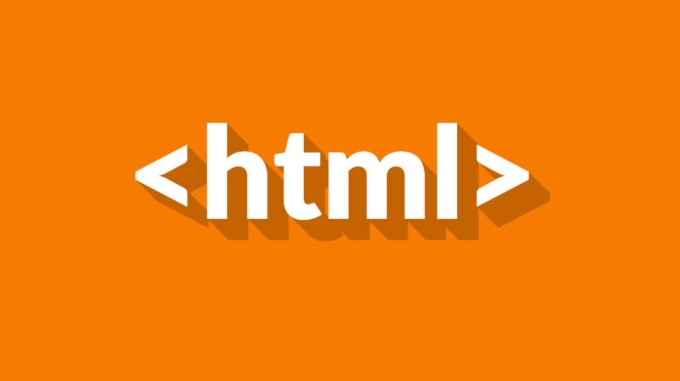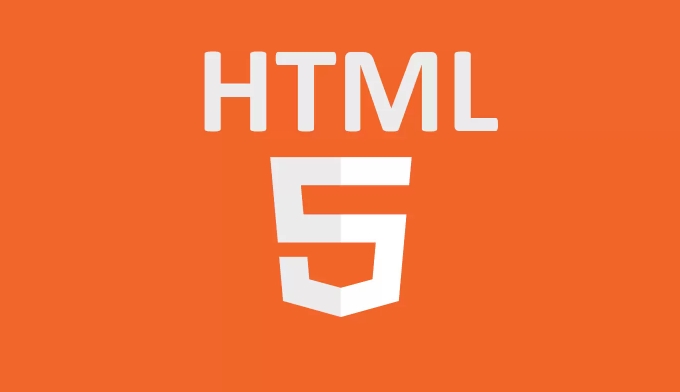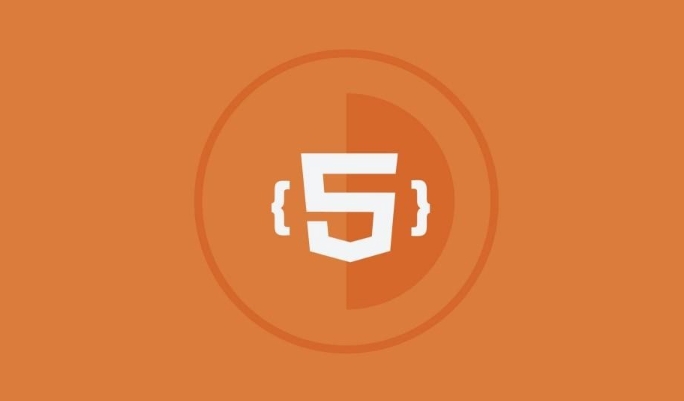What are the most common attributes used with HTML tags?
Jun 30, 2025 am 01:35 AMThe most commonly used and practical properties in HTML development include class, id, href, src, alt, and type. class is used to share styles or behaviors, and an element can have multiple classes; id uniquely identifies a specific element, suitable for anchor links or JS acquisition objects; href is used to specify a hyperlink or stylesheet resource path; src represents the source path of resources such as pictures and scripts; alt provides image alternative text to enhance accessibility and SEO; type defines input types, button behaviors, or script language types, such as text, password, submit, etc. These properties are critical to the functionality, appearance and accessibility of the page, and mastering them helps to develop a well-structured, fully functional web page.

In HTML development, there are some attributes that are frequently used by developers and are indispensable. These attributes not only determine the behavior and appearance of the tag, but also play a key role in the functionality and accessibility of the page. Listed below are some of the most common and practical HTML attributes.

class and id : used for style and script operations
These two properties are mainly used for CSS style control and JavaScript manipulation of DOM elements.

- class : Applicable to multiple elements that share the same style or behavior. An element can have multiple classes.
- id : Uniquely identifies a specific element, often used for anchor links or JS to obtain specific objects.
For example:
<div class="content main" id="section1">This is the content</div>
-
class="content main"means that this div has two class names at the same time; -
id="section1"guarantees that it is unique throughout the document.
Generally speaking, class is more commonly used in front-end development, while id is more suitable for unique identifiers.

href and src : The key to resource reference
These two attributes are used in tags such as <a> and <img src="/static/imghw/default1.png" data-src="image.jpg" class="lazy" alt="What are the most common attributes used with HTML tags?" > , respectively, and are used to specify the location of external resources.
- href : Used for hyperlinks (such as
<a href="https://example.com">) or stylesheet introduction (such as<link rel="stylesheet" href="style.css">). - src : represents the source path of resources such as pictures, scripts, videos, etc., such as
<img src="/static/imghw/default1.png" data-src="image.jpg" class="lazy" alt="What are the most common attributes used with HTML tags?" >or<script src="main.js">.
The difference is:
-
hrefis "I want to jump to" or "I want to load this resource" -
srcis "I need to get data from here to display"
If these two attributes are written incorrectly, the page function will be abnormal or the resource loading fails, so pay special attention to the path writing method.
alt : Alternative text for images to improve accessibility
The alt attribute appears in the <img src="/static/imghw/default1.png" data-src="logo.png" class="lazy" alt="What are the most common attributes used with HTML tags?" > tag to describe the content of the image. This text will be displayed when the image cannot be loaded.
<img src="/static/imghw/default1.png" data-src="logo.png" class="lazy" alt="Company Logo">
Search engines will also read alt text to understand the meaning of the image, so using this attribute is also helpful for SEO.
suggestion:
- The description is clear and concise, avoiding the accumulation of keywords;
- If it is a decorative picture, you can leave
alt=""blank.
type : defines the content type or input format
type appears in various tags, such as:
-
<input type="text">: Define the type of the input box; -
<button type="submit"></button>: defines the behavior of a button; -
<script type="text/javascript"></script>: Define script language types (the default is JS for modern browsers, but it is still recommended to retain them);
Common input types include:
-
text -
password -
email -
checkbox -
radio
Different types of inputs will affect the user input method and browser verification logic.
Basically that's it. Although there are many attributes of HTML, the above are the most basic and commonly used in daily development. Mastering them well will allow you to write web pages with clear structure and complete functions.
The above is the detailed content of What are the most common attributes used with HTML tags?. For more information, please follow other related articles on the PHP Chinese website!

Hot AI Tools

Undress AI Tool
Undress images for free

Undresser.AI Undress
AI-powered app for creating realistic nude photos

AI Clothes Remover
Online AI tool for removing clothes from photos.

Clothoff.io
AI clothes remover

Video Face Swap
Swap faces in any video effortlessly with our completely free AI face swap tool!

Hot Article

Hot Tools

Notepad++7.3.1
Easy-to-use and free code editor

SublimeText3 Chinese version
Chinese version, very easy to use

Zend Studio 13.0.1
Powerful PHP integrated development environment

Dreamweaver CS6
Visual web development tools

SublimeText3 Mac version
God-level code editing software (SublimeText3)

Hot Topics
 Explain the purpose of the role attribute in ARIA.
Jun 14, 2025 am 12:35 AM
Explain the purpose of the role attribute in ARIA.
Jun 14, 2025 am 12:35 AM
ARIA's role attribute is used to define the role of web elements and improve accessibility. 1. Role attribute helps assistive technology to understand the functions of elements, such as buttons, navigation, etc. 2. Use role attributes to assign specific roles to non-semantic HTML elements. 3. The role attribute should be consistent with the element behavior and be verified by the accessibility tool test.
 HTML and Design: Creating the Visual Layout of Websites
Jun 14, 2025 am 12:39 AM
HTML and Design: Creating the Visual Layout of Websites
Jun 14, 2025 am 12:39 AM
How to create a website layout? 1. Use HTML tags to define the content structure, such as, ,. 2. Control styles and positions through CSS, using box model, float or Flexbox layout. 3. Optimize performance, reduce HTTP requests, use cache and optimize images, and ensure responsive design.
 How can you ensure your HTML code is readable and maintainable?
Jun 10, 2025 am 12:06 AM
How can you ensure your HTML code is readable and maintainable?
Jun 10, 2025 am 12:06 AM
Improve the readability and maintainability of HTML code can be achieved through the following steps: 1. Use semantic tags, such as, etc. to make the code structure clear and improve SEO effect; 2. Keep the code formatted and use consistent indentation and spaces; 3. Add appropriate comments to explain the code intention; 4. Avoid excessive nesting and simplify the structure; 5. Use external style sheets and scripts to keep the HTML concise.
 How do I stay up-to-date with the latest HTML standards and best practices?
Jun 20, 2025 am 08:33 AM
How do I stay up-to-date with the latest HTML standards and best practices?
Jun 20, 2025 am 08:33 AM
The key to keep up with HTML standards and best practices is to do it intentionally rather than follow it blindly. First, follow the summary or update logs of official sources such as WHATWG and W3C, understand new tags (such as) and attributes, and use them as references to solve difficult problems; second, subscribe to trusted web development newsletters and blogs, spend 10-15 minutes a week to browse updates, focus on actual use cases rather than just collecting articles; second, use developer tools and linters such as HTMLHint to optimize the code structure through instant feedback; finally, interact with the developer community, share experiences and learn other people's practical skills, so as to continuously improve HTML skills.
 How do I use the element to represent the main content of a document?
Jun 19, 2025 pm 11:09 PM
How do I use the element to represent the main content of a document?
Jun 19, 2025 pm 11:09 PM
The reason for using tags is to improve the semantic structure and accessibility of web pages, make it easier for screen readers and search engines to understand page content, and allow users to quickly jump to core content. Here are the key points: 1. Each page should contain only one element; 2. It should not include content that is repeated across pages (such as sidebars or footers); 3. It can be used in conjunction with ARIA properties to enhance accessibility. Usually located after and before, it is used to wrap unique page content, such as articles, forms or product details, and should be avoided in, or in; to improve accessibility, aria-labeledby or aria-label can be used to clearly identify parts.
 How do I create a basic HTML document?
Jun 19, 2025 pm 11:01 PM
How do I create a basic HTML document?
Jun 19, 2025 pm 11:01 PM
To create a basic HTML document, you first need to understand its basic structure and write code in a standard format. 1. Use the declaration document type at the beginning; 2. Use the tag to wrap the entire content; 3. Include and two main parts in it, which are used to store metadata such as titles, style sheet links, etc., and include user-visible content such as titles, paragraphs, pictures and links; 4. Save the file in .html format and open the viewing effect in the browser; 5. Then you can gradually add more elements to enrich the page content. Follow these steps to quickly build a basic web page.
 What is an HTML tag?
Jun 13, 2025 am 12:36 AM
What is an HTML tag?
Jun 13, 2025 am 12:36 AM
HTMLtagsareessentialforstructuringwebpages.Theydefinecontentandlayoutusinganglebrackets,ofteninpairslikeand,withsomebeingself-closinglike.HTMLtagsarecrucialforcreatingstructured,accessible,andSEO-friendlywebpages.
 How do I create checkboxes in HTML using the element?
Jun 19, 2025 pm 11:41 PM
How do I create checkboxes in HTML using the element?
Jun 19, 2025 pm 11:41 PM
To create an HTML checkbox, use the type attribute to set the element of the checkbox. 1. The basic structure includes id, name and label tags to ensure that clicking text can switch options; 2. Multiple related check boxes should use the same name but different values, and wrap them with fieldset to improve accessibility; 3. Hide native controls when customizing styles and use CSS to design alternative elements while maintaining the complete functions; 4. Ensure availability, pair labels, support keyboard navigation, and avoid relying on only visual prompts. The above steps can help developers correctly implement checkbox components that have both functional and aesthetics.






